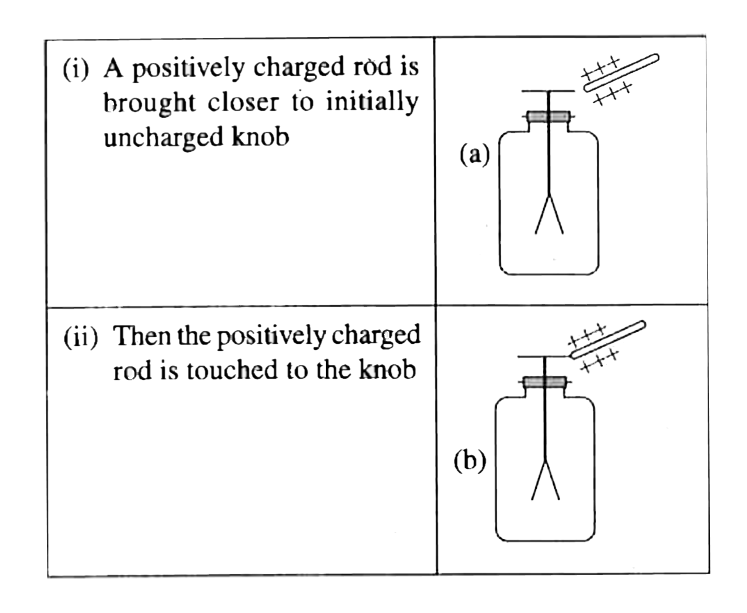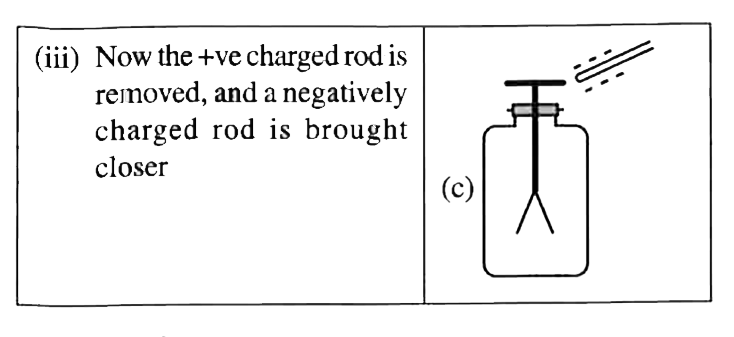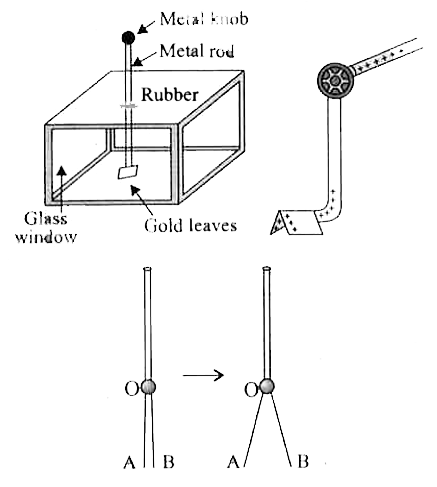A gold leaf electroscope is charged and the leaves are observed to diverge by a certain amount. A beam of X-rays is allowed to fall upon the electroscope for a short period. The leaves would :
collapse
melt
diverge more
not diverge more.
The correct Answer is:D
Topper's Solved these Questions
- BOOK - MODERN PUBLICATIONCHAPTER - ELECTROMAGNETIC WAVESEXERCISE - MULTIPLE CHOICE QUESTIONS (LEVEL-II)46videos
ELECTROMAGNETIC WAVES
- BOOK - MODERN PUBLICATIONCHAPTER - ELECTROMAGNETIC WAVESEXERCISE - MULTIPLE CHOICE QUESTIONS (LEVEL-II)(Assertion)2videos
ELECTROMAGNETIC WAVES
- BOOK - MODERN PUBLICATIONCHAPTER - E.M. INDUCTION AND A.C. CURRENTS EXERCISE - RECENT COMPETITIVE QUESTIONS31videos
E.M. INDUCTION AND A.C. CURRENTS
- BOOK - MODERN PUBLICATIONCHAPTER - ELECTRONS & PHOTONSEXERCISE - RECENT COMPETITIVE QUESTIONS20videos
ELECTRONS & PHOTONS
Similar Questions
A glass rod rubbed with silk is used to charge a gold leaf electroscope and the leaves are observed to diverge. The electroscope thus charged is exposed to X-rays for a short period. Then
View SolutionA gold leaf electroscope has two ....................... (ebonite/gold) leaves hanging parallel to each other.
View Solution
Knowledge Check
- Question 1 - Select One
A glass rod rubbed with silk is used to charge a gold leaf electroscope and the leaves are observed to diverge. The electroscope thus charged is exposed to X-rays for a short period. Then
AThe divergence of leaves will not be affectedBThe leaves will diverge furtherCThe leaves will collapseDThe leaves will melt - Question 2 - Select One
A glass rod rubbed with silk is used to charge a gold leaf electroscope and the leaves are observed to diverge. The electroscope thus charged is exposed to X-rays for a short period. Then
Athe divergence of leaves will not be affectedBthe leaves will diverge furtherCthe leaves will collapseDthe leaves will melt - Question 3 - Select One
When a plastic rod rubbed with wool is brought near the knob of a negatively charged gold leaf electroscope, the gold leaves
AContractBDilateCStart oscillatingDCollapse completely
When a glass rod rubbed with silk is brough near the knob of a positively charged gold leaf electroscope , the gold leaves
View SolutionA negatively charged rod is held close to the disc of a neutral gold leaf electroscope. What kind of charge is produced on the
disc
gold leaves ?View SolutionWhen a glass rod rubbed with silk is brough near the knob of a positively charged gold leaf electroscope , the gold leaves
View SolutionA leaf electroscope is a simple apparatus to detect any charge on a body. It consist of two metal leaves OA and OB, free to rotate about O. Initially both are very slighty separted. When a charged object is touched to the metal knob at the top of the conduction re, charge flows from knob to the top of the conduction rod, charge flows from knob to the leaves through the conducting rod, charge flows from knob to the leaves through the conduction rod. As the leaves are now charged similarly, they start repelling each other and tet separted (deflected by certain angle).

The angle of deflection in static equilibrium is an indicator of the amount of charge on the charged boy.
If we perform these steps one by one.


In which case, the leaves will converge (come closer), as compared to the previous state?View SolutionA leaf electroscope is a simple apparatus to detect any charge on a body. It consist of two metal leaves OA and OB, free to rotate about O. Initially both are very slighty separted. When a charged object is touched to the metal knob at the top of the conduction re, charge flows from knob to the top of the conduction rod, charge flows from knob to the leaves through the conducting rod, charge flows from knob to the leaves through the conduction rod. As the leaves are now charged similarly, they start repelling each other and tet separted (deflected by certain angle).

The angle of deflection in static equilibrium is an indicator of the amount of charge on the charged boy.
When a+20C rod is touched to the knob, the deflection of leaves was 5∘, and when an identical rod of −40C is touched, the deflection was found to be 9∘. If an identical rod of +30C is touched, then the deflection may be:View Solution

